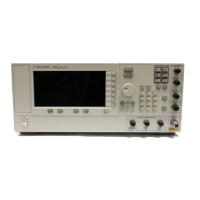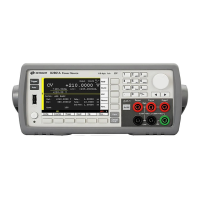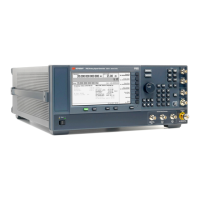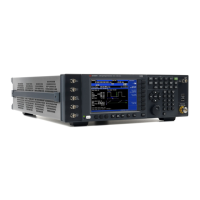Remote Interface Reference 4
Keysight 33210A User’s Guide 229
Burst Mode Commands
See also “Burst Mode” starting on page 112 in Chapter 3.
Burst Mode Overview
The following is an overview of the steps required to generate a burst. You can use
burst in one of two modes as described below. The function generator enables
one burst mode at a time.
– Triggered Burst Mode: In this mode (also called N Cycle Burst), the function
generator outputs a waveform with a specified number of cycles (burst count)
each time a trigger is received. After the specified number of cycles have been
output, the function generator stops and waits for the next trigger. You can
configure the function generator to use an internal trigger to initiate the burst,
or you can provide an external (manual) trigger by pressing the front-panel
key, applying a trigger signal to the rear-panel Trig In connector, or by
sending a software trigger command from the remote interface.
– External Gated Burst Mode: In this mode, the output waveform is either “on” or
“off ” based on the level of the external signal applied to the rear-panel Trig In
connector. When the gate signal is true, the function generator outputs a
continuous waveform. When the gate signal goes false, the current waveform
cycle is completed and then the function generator stops while remaining at
the voltage level corresponding to the starting burst phase of the selected
waveform.
Burst Mode
(BURS:MODE)
Burst Count
(BURS:NCYC)
Burst Period
(BURS:INT:PER)
Burst Phase
(BURS:PHAS)
Trigger Source
(TRIG:SOUR)
Triggered Burst Mode:
Internal Trigger
TRIGgered Available Available Available IMMediate
Triggered Burst Mode:
External Trigger
TRIGgered Available Not Used Available EXTernal, BUS
Gated Burst Mode:
External Trigger
GATed Not Used Not Used Available Not Used
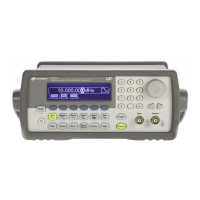
